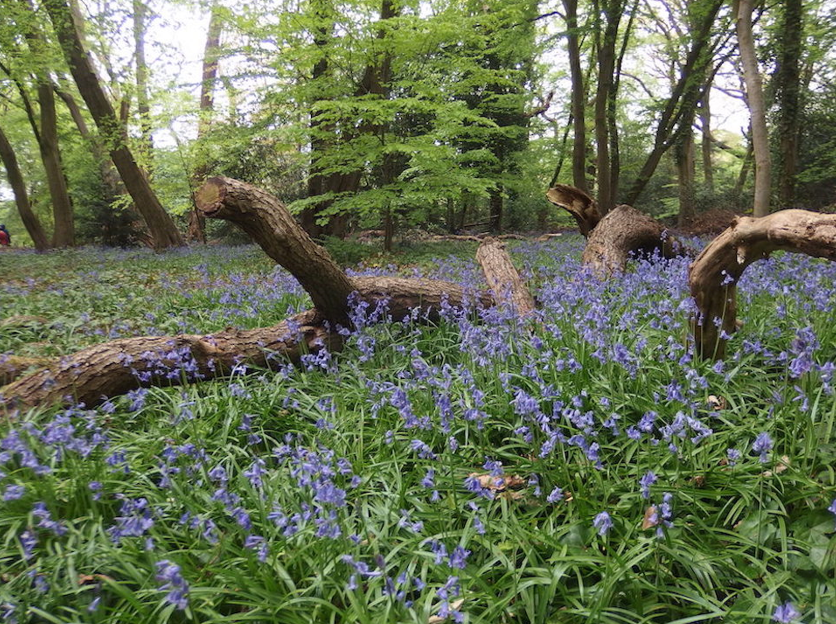Highgate Wood walk
If you go down to Highgate Wood today – or any day – you’re in for a wildlife surprise, as some of our volunteers and Friends discovered on a walk with our Assistant Ranger Jo Maddox
Welcome to Highgate Wood!
What a beautiful day for a woodland walk! The sun is shining, birds are singing and squirrels are squabbling – anyone would think it’s spring! Talk about the calm after storms Dudley, Eunice and Franklin.
While it might not be spring proper, we’re pleasantly surprised to find there’s still lots going on in Highgate Wood at this time of year. Wild daffodils, crocus and snowdrops are blooming in the ‘Field of Hope’; queen bumblebees are emerging from their hibernation chambers in search of pollen and nectar; frogs are spawning in the conservation ponds; redwings are chattering in readiness for their migration back to Scandinavia; drumming woodpeckers are sounding out their territories; and birds of all types can easily be spotted amongst the leafless oaks and hornbeam.
Wild daffodils in Marie Curie’s ‘Field of Hope’, planted by Heath Hands’ volunteers twenty years ago
Wood Keeper Cindy demonstrates how a bat grips to the inside of a bat box
Not usually seen at this time of year are the bats we saw with Wood Keeper Cindy Blaney, who revealed six tiny bumblebee-size pipistrelles hibernating in one box, and two golden-brown Noctules in another. What a treat!
Two golden-brown Noctules hibernating in a delipidated home-made bat box in ‘bat alley’. Thanks to Tim Harrison for the great photo!
Once part of the Great Forest of Middlesex, Highgate Wood is one of several surviving remnants of ancient woodland, along with neighbouring Queen’s Wood, Cherry Tree Wood and Coldfall Wood. Harvested for its timber between the 16th and 18th centuries, Highgate Wood is now looked after by the City of London and Heath Hands’ volunteers, with a focus on managing and conserving its rare habitats for the rich diversity of wildlife it supports.
This coppiced hornbeam could be a thousand years old!
The beautifully distorted shapes and shadows of the lapsed coppice hornbeam and standard oaks (once used to build ships as far back as the battle with the Spanish Armada) dominate and represent the great age of this pre-historic 70-acre woodland. But its true testament to surviving the rise of agriculture some 5000 years ago are its wild service, or chequers, trees. Once widespread throughout much of Britain, its fruit was used to make a very strong beer - hence the name of ‘Chequers’ pubs and the prime minister’s country residence.
Wild service trees are an indicator species of ancient woodland
Fittingly, our walk through the meandering woodland trails concludes at the foot of one of just a handful of wild service trees that still grow in the Wood. Craning our necks to see the uppermost branches, it’s difficult to believe we’re just a short distance from the hustle and bustle of the City and Covent Garden market, where the fruit of these fascinating trees were still being sold as sweet treats for children just a hundred years ago!
Highgate Wood is carpeted with bluebells in spring
What will you discover if you go down to Highgate Wood today? Top tip: Visit late April to see the stunning white blossom of the wild service trees, and take in the scent of a woodland floor carpeted with English bluebells.
Psst… If you’re batty about bats too, why not adopt a bat box made by one of our dedicated volunteers?
And do check out our upcoming walks to discover more about the nature of our green spaces.







